I’ve been part of group rebuilding the historic 1840s garden around La Trobe’s Cottage in Melbourne. I decided we needed a bird bath in the garden at La Trobe’s Cottage to help attract the birds but more importantly to attract the bees so they would pollinate our heritage apples – Malus ‘Ribston Pippin’ (1709) and Malus ‘Pomme de Neige’ (Pre 1800s) because last year (2014) we didn’t get any apples. This year we got 2 x Malus ‘Ribston Pippin’ and 1 x Malus ‘Pomme de Neige’. I have just harvested and eaten one of our very first apples – a Ribston Pippin. It was okay, a bit tart, but probably good in cooking.
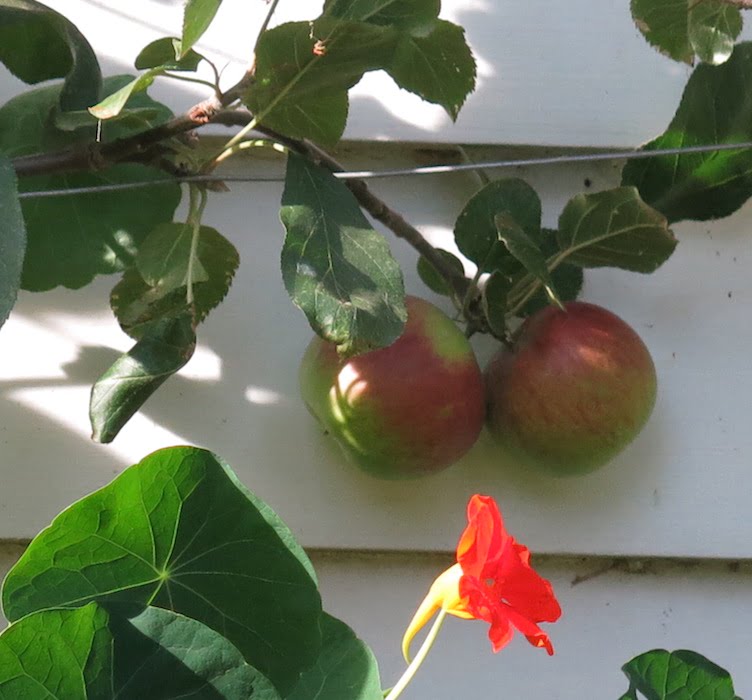
Malus Ribston Pippin apples
I had never really thought about birds baths before and found the history is quite sparse, especially for very early Melbourne. I googled (of course) and ended up, as you do, on Wikipedia. It was quite interesting to discover that originally there were no such things as bird baths; originally they were just depressions in the ground or in rocks, puddles or in hollows of old trees.
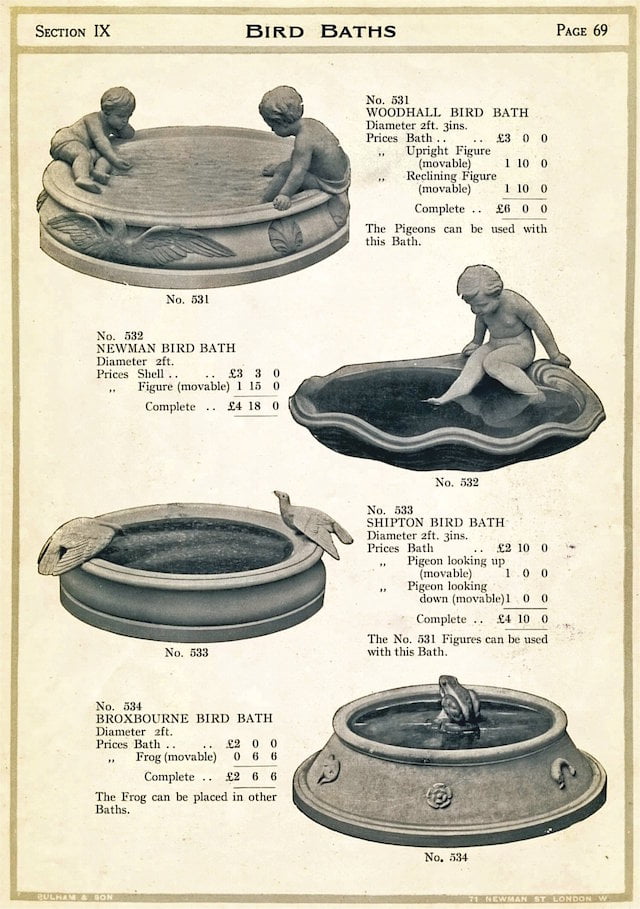
Page 69e – Bird Baths from The Garden Ornament Catalogue by James Pulham and Son
It wasn’t until about the 1840s when there was a large well-off middle class in England, who had time and money, that bird baths began to be made, and thought of as a piece of garden furniture. So I continued googling and found a very early English company named Pulham and Sons (or Pulman depending on how you spell it and, unfortunately, not a family relative) in the 1840s who started manufacturing them.
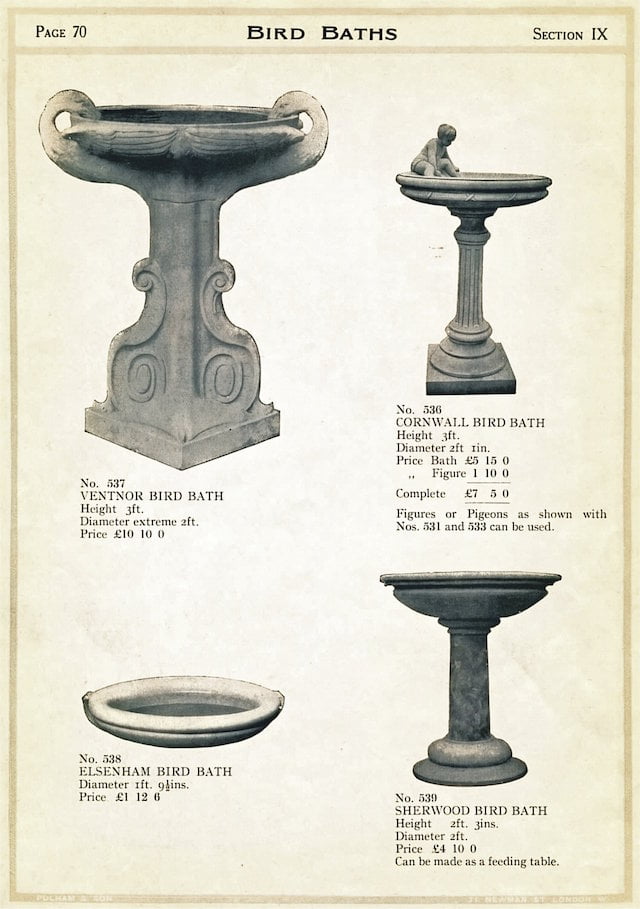
Page 70e – Bird Baths from The Garden Ornament Catalogue by James Pulham and Son
They were terracotta and were quite sophisticated and highly unlikely to be available to the new colony of Melbourne. Melbourne in the early 1840s was very basic and had very few frivolous items such as a bird bath.

Page 71e – Bird Baths from The Garden Ornament Catalogue by James Pulham and Son
So I was in a bit of a quandary – what type of bird bath would have La Trobe had if he had one at all? So I contacted people and groups far and wide, such as the Kew Gardens, the Royal Horticultural Society in England, the Royal Botanic Gardens Melbourne, different Ornithology societies in England, the Gould League in Melbourne and no-one really knew anything about the history of bird baths.
A little more research revealed that Jolimont* was just up on a rise from the flood plains of the Yarra River and it is highly likely that he didn’t need a bird bath because there was plenty of water lying around in depressions etc. If he did, he may have used old crockery pots, cast iron cooking pots or old logs; anything that would hold water.

Wheel barrowing in our very heavy log bird bath
Even though the terracotta ones produced by Pulham and Sons were simply gorgeous (and how I would love one) they would not have been available in very early Melbourne. Instead a decision was made to find a log that was slightly hollowed out. I was very lucky that one of the volunteers sons-in-law happened to live in the Otways (a lovely connection to La Trobe, as he explored the area on his horse in 1846) and he was able to locate a log and chisel out some of the wood to make a shallow depression. He recommended sealing it with wax but unfortunately that wasn’t going to work, so I used modern glue.
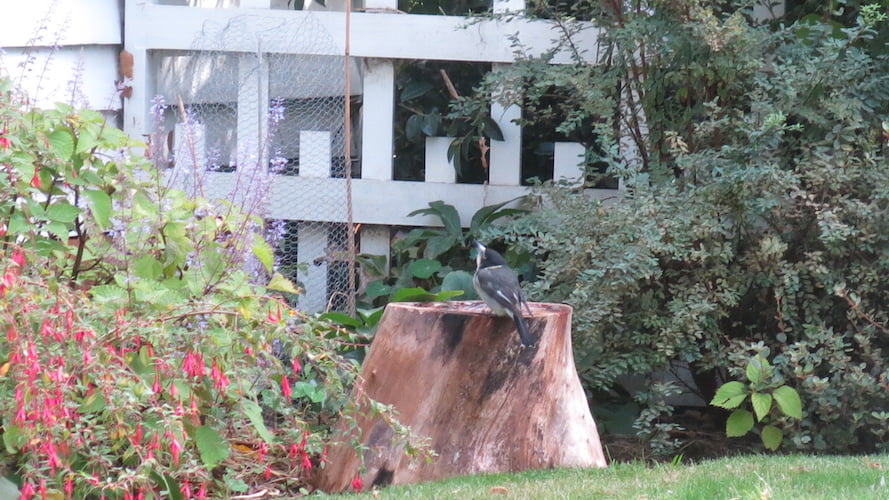
Butcherbird having a refreshing drink from the new birdbath
And our birds don’t know it is a modern chemical concoction and love it. I have seen Honey Eaters and the several Butcher Birds landing and drinking from it which is absolutely just what is was made for. As yet I haven’t seen a bee with in coo-ee, but I am hopeful.
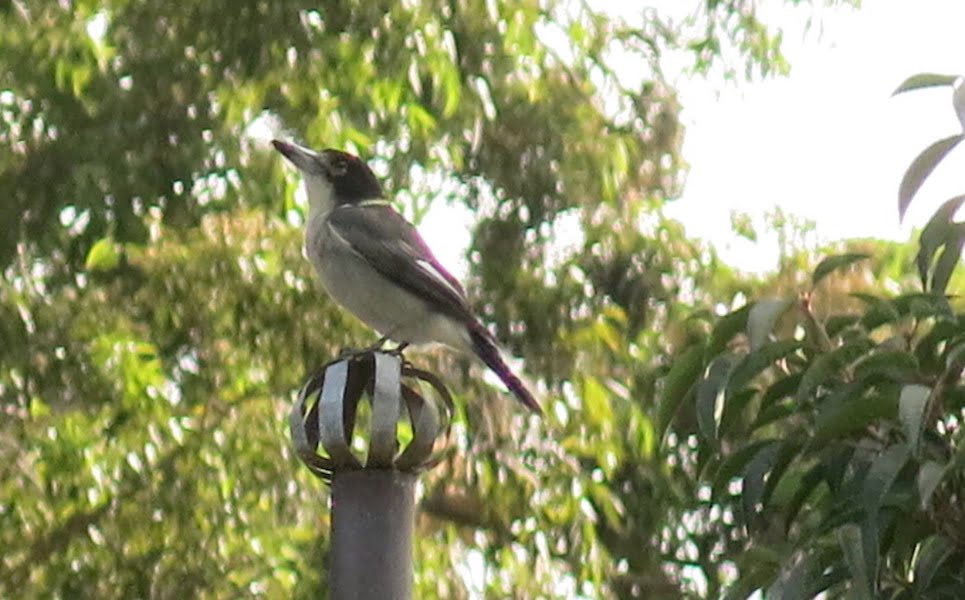
Ready for take off from the stack vent
* Jolimont was the name given to La Trobe’s estate and is the area located just behind the Melbourne Cricket Ground (MCG). The cottage moved in the early 1960s and again in 1998 and now is in the gardens of Kings Domain, behind the Shrine of Remembrance, in Melbourne.
[Many thanks to Claude Hitching, author Rock Landscapes: The Pulham Legacy, who kindly supplied pictures from ‘The Garden Ornament Catalogue by James Pulham and Son, of Broxbourne, Hertfordshire, England’, c1877]
